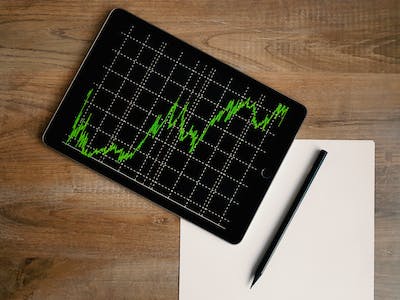Understanding Algorithmic Trading A Comprehensive Guide

Mastering Swing Trading Techniques A Comprehensive Guide
December 18, 2023
Unleashing the Potential of Automated Forex Trading Systems
July 15, 2024Introduction:
Algorithmic trading, also known as algo trading or automated trading, has become a prominent and influential force in financial markets. This sophisticated method of trading utilizes computer algorithms to execute buy or sell orders with speed and precision. In this comprehensive guide, we'll delve into the fundamental aspects of algorithmic trading, exploring its definition, key components, advantages, and challenges.
What is Algorithmic Trading?
Algorithmic trading refers to the use of computer algorithms to automate the process of trading financial instruments, such as stocks, bonds, currencies, and commodities. These algorithms are sets of rules and instructions programmed to make trading decisions based on predefined criteria, market conditions, and statistical models. The primary goal is to execute trades with optimal speed, efficiency, and accuracy.
Key Components of Algorithmic Trading:
Algorithm Development:
- The process begins with the development of trading algorithms, which are often created by quantitative analysts (quants) and financial experts.
- Algorithms can range from simple, rule-based strategies to highly complex models that leverage advanced mathematical and statistical techniques.
Data Analysis:
- Algorithmic trade relies heavily on data analysis. Historical and real-time market data, including price movements, trading volumes, and other relevant indicators, are used to inform algorithmic decisions.
- Technical indicators, statistical models, and machine learning algorithms may be employed to identify patterns and trends.
Execution Strategies:
- Algo traders use various execution strategies, such as market making, arbitrage, trend following, and mean reversion, depending on their goals and market conditions.
- Market makers, for example, aim to profit from the bid-ask spread, while trend-following algorithms capitalize on identified market trends.
Risk Management:
- Effective risk management is crucial in algorithmic trading to mitigate potential losses. Algorithms often include risk controls and stop-loss mechanisms to protect the trader from adverse market movements.
Advantages of Algorithmic Trading:
Speed and Efficiency:
- Algorithms can execute trades at speeds impossible for human traders, taking advantage of fleeting market opportunities.
- Reduced latency leads to quicker order placement, minimizing the impact of market fluctuations.
Precision and Consistency:
- Algorithms execute trades with precision and consistency, following predefined rules without emotional bias.
- This consistency helps in maintaining a disciplined trading approach.
Backtesting and Optimization:
- Traders can backtest algorithms using historical data to assess their performance under various market conditions.
- Optimization allows for refining algorithms to enhance their effectiveness.
Challenges of Algorithmic Trading:
Technical Complexity:
- Developing and maintaining sophisticated algorithms requires advanced technical skills and expertise.
- Technical glitches or system failures can lead to significant financial losses.
Market Risks:
- Algorithmic trading is not immune to market risks, and poorly designed algorithms may fail to adapt to unexpected market events.
- Flash crashes and sudden, extreme price movements pose challenges to algo traders.
Regulatory Scrutiny:
- As algorithmic trade has gained prominence, regulatory bodies have increased scrutiny to ensure fair and transparent market practices.
- Compliance with regulatory requirements is essential to avoid legal issues.
Conclusion:
Algorithmic trading has revolutionized the landscape of financial markets, providing traders with powerful tools to navigate the complexities of buying and selling assets. As technology continues to advance, algorithmic trade is likely to evolve further, shaping the future of financial markets and influencing how investors approach trading strategies. Understanding the principles and intricacies of algorithmic is essential for anyone looking to navigate the dynamic and rapidly changing world of finance.


